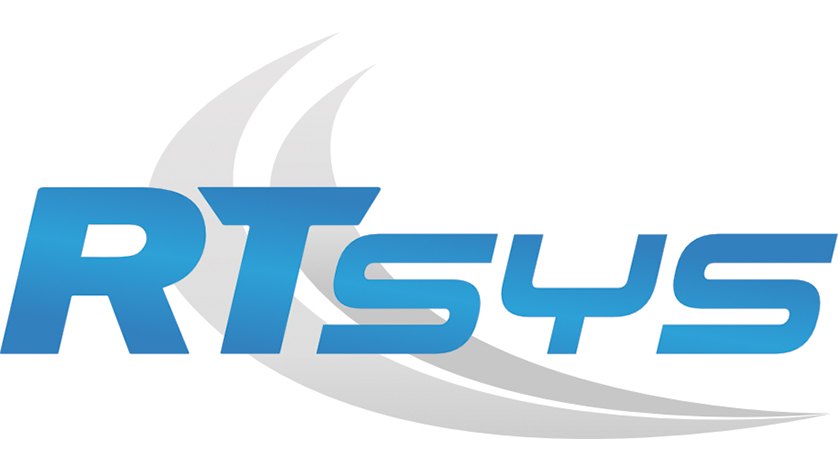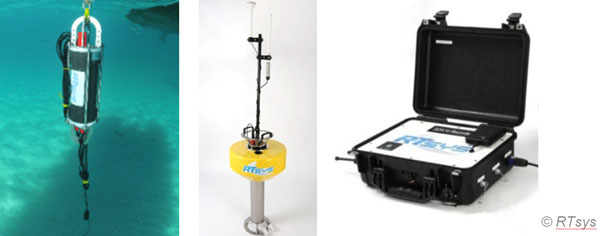Cutting Edge Technology in Underwater Acoustics Listening Systems

RTsys has a complete range of underwater acoustic recorders used in scientific studies or to monitor wind and tidal energy farms.The quality of the data collected by these recorders is widely recognized by users, such as universities, institutes, industrials such as marine renewable energies and oil & gas companies. RTsys recorders are also used by national navies.
Whether they are generated by marine fauna or of anthropic origin, there is a lot of underwater noise. In order to help better identify the sounds and learn about the characteristics, RTsys has developed a range of underwater acoustic recorders. RTsys has designed an extensive range of robust and modular devices for a variety of different uses, with the cutting-edge SDA (Synchronous Data Acquisition) electronic board at its technological core. Equipped with up to sixteen (16) hydrophones, the recorders can be used to record underwater sounds over extended periods, or offer real-time measurement solutions, some with a wireless option. Depending on the depth at which the measurements will be made, RTsys offers three materials: plastic (up to 200m depth), aluminum (up to 1000m depth) or titanium (up to 6000m depth).
 Meeting Marine Renewable-Energy Regulation Requirements
Meeting Marine Renewable-Energy Regulation Requirements
European regulation limits manmade underwater noise in order to protect underwater wildlife. Before a wind turbine can be built, recorders monitor the underwater soundscapes in the area concerned for up to a year. The recording capacity of RTsys devices, their versatility, and their long battery life make these devices particularly useful for collecting the desired information, in particular the RESEA, available in 320, 550 or 1210 mm sizes. Signal analysis, which is carried out afterwards, is made easier by an inbuilt pre-calculation system or by the RT Quick Report software, which provide initial analyses in graph form after some minutes.
Real-time measurement
When a wind turbine is installed the noise produced by machinery can reach critical levels for marine mammals. Thanks to RTsys, acoustic planning boards and developers now have acoustic buoys (REMY and RUBHY) equipped with technology which analyses recorded signals in real time. An alert is generated automatically when specified sound levels are exceeded. The recorders are therefore simple and reliable construction management tools. The modularity of the RTsys systems, amongst other characteristics, means that the same devices can be used throughout a particular building project, as well as for monitoring after the completion of the project; the objective being to monitor the wind or water turbine, as well as to monitor the return of underwater wildlife to the site.
The quality and reliability of RTsys' recorders for monitoring marine renewable energy has been recognized by users for many years. Real-time signal processing, tested from 2014 in German waters, was approved thanks to its ease of use. RTsys’ acoustic buoys are now used worldwide on a number of wind farms.
Up to 16 hydrophones
For recordings over large areas, or for location, RTsys offers the MULTHY recording system. It consists of a recorder coupled to an antenna. The default version is a linear antenna equipped with 16 omnidirectional hydrophones. Depending on the measurement needs, flat or geometric forms can be used, for example to visualize the location of the sounds recorded. The multiple hydrophones, in combination with digital processing, reduce noise and therefore improve signal quality. Thus, the recording signal to noise ratio is improved by 12 decibels. This improvement can be used to increase the range and therefore the listening area. Processing this large number of recording channels is possible thanks to the SDA-416 card, a new version of the technological core of RTsys devices. It provides improved performance and this multiple recording capability, without excessive energy consumption.
The Best Quality High Frequency Signal
RTsys recorders are also used in scientific marine research. The quality of high frequency recordings makes RTsys recorders the tools of choice when it comes to studying marine mammals, such as sperm whales, porpoises, and dolphins. The range of recorders includes portable devices, such as suitcase RESEA, for immediate data acquisition during short experiments, as well as a recording device to cover extended periods, the RESEA in recorder mode, which can remain underwater for several months, for studies which include aspects of seasonality and animal migration. Several hydrophones can be connected to a recorder which enable researchers to determine the movements of the animals studied, amongst other things.
Recorders Suitable for Arctic Waters
Underwater invertebrates can be studied using RTsys recorders. Indeed, the noise created by movement or breathing can provide useful information about the health of these animals, as well as the ecosystem. The RESEA recorder was used by an IUEM (European University Institute of the Sea) research team to record underwater wildlife in a polar environment, in waters below -2°C. Given its resistance to extreme temperatures and ease of use, researchers and divers were satisfied with the recorder, and it also enabled them to record the creaking and cracking of icebergs, at low frequencies, thanks to a simple settings modification.

